Fun Games to Play on a Night In with Kids
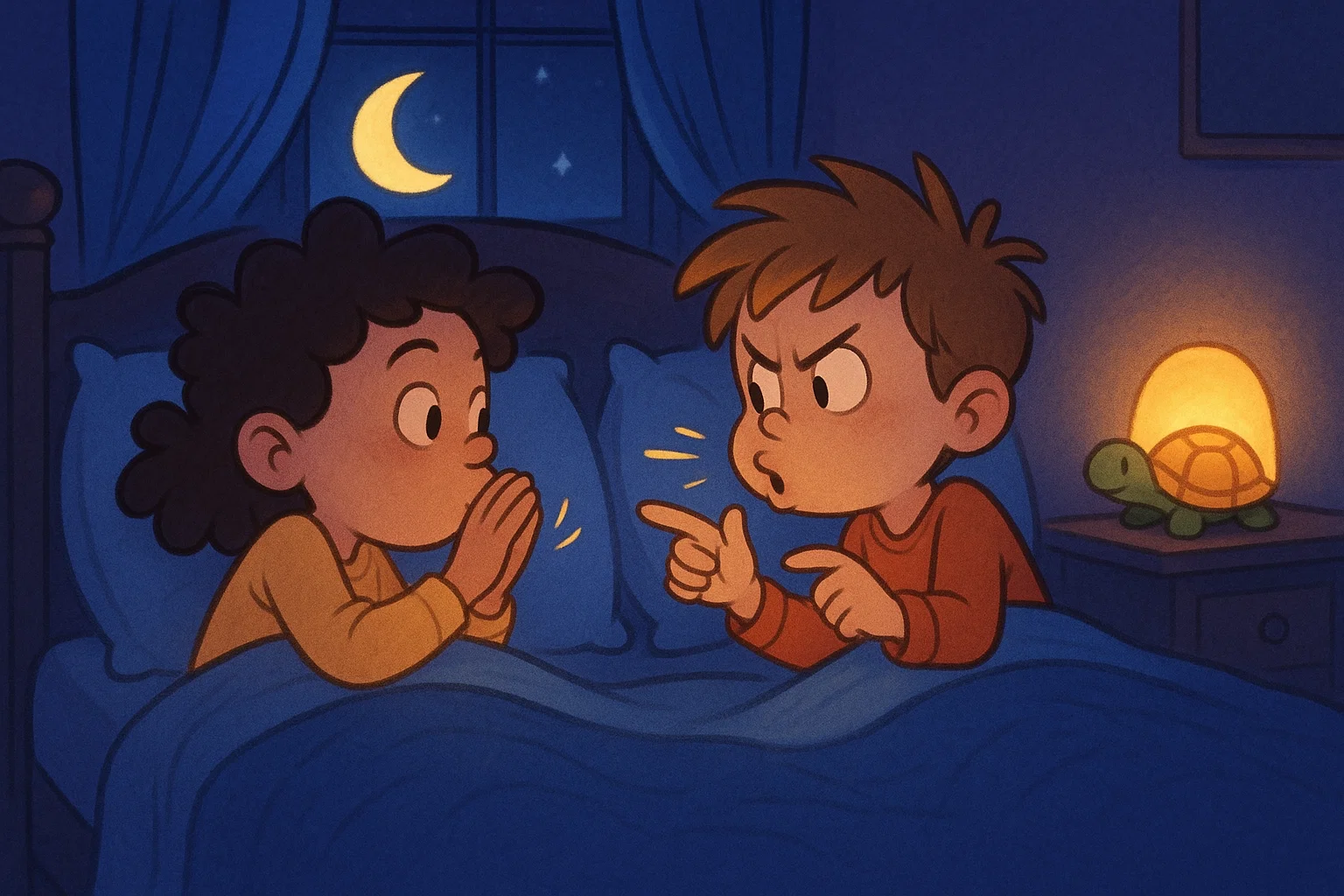
When the sun sets and your little ones still have energy to burn, finding the right games to play can transform a restless evening into quality family time. These activities don’t require elaborate setups or expensive toys—just creativity, a willingness to be silly, and maybe a flashlight or two.
Parents often face the challenge of keeping kids entertained indoors without resorting to screens. The good news? Your home is already filled with opportunities for imaginative play that can help children develop social skills, creativity, and physical coordination while winding down before bedtime.
Sound and Listening Games
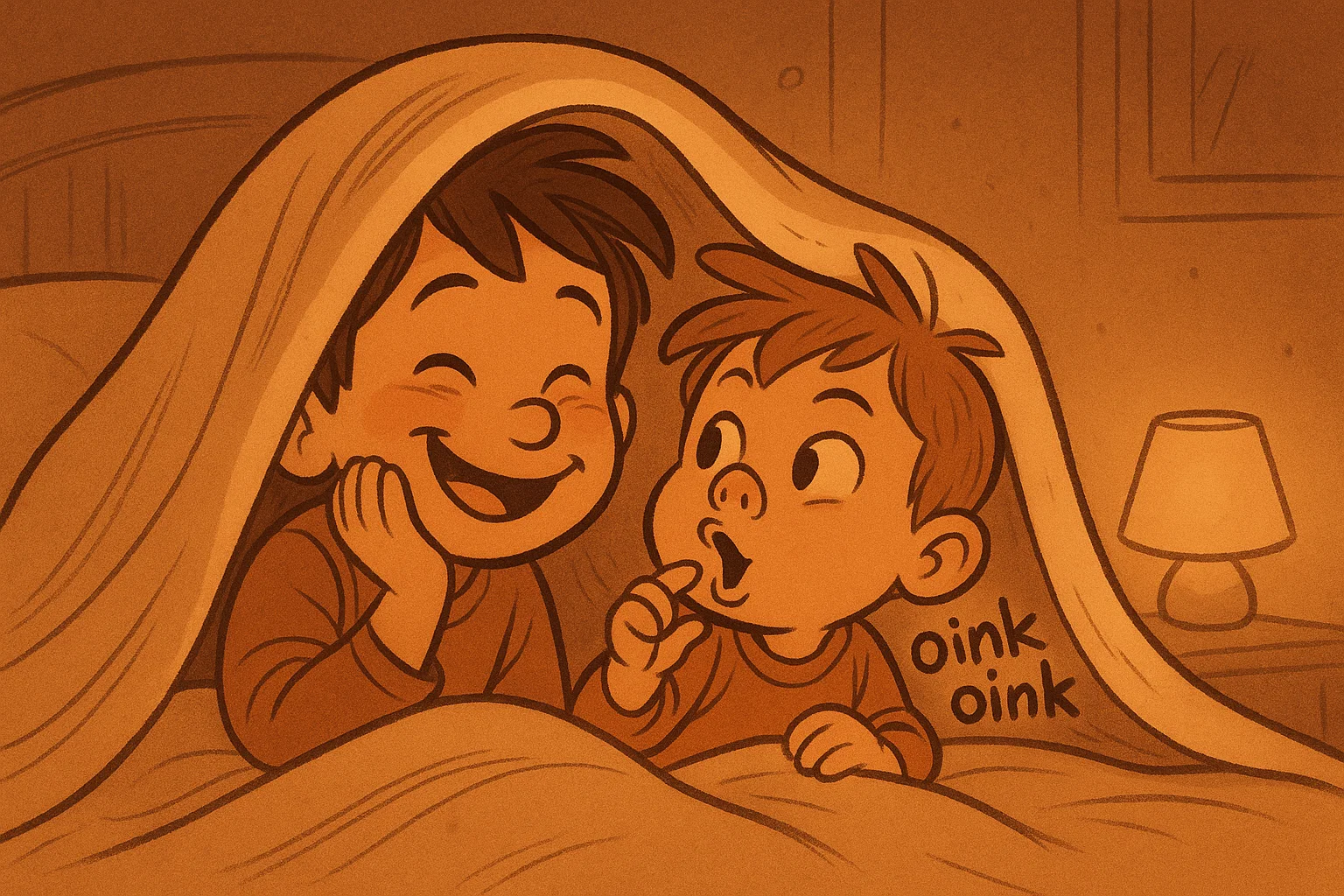
Listening games sharpen auditory processing skills while keeping kids engaged without requiring much physical space. These activities work particularly well when you’re trying to transition from high-energy play to calmer bedtime routines.
The Animal Noises Challenge
One player makes an animal noise while others guess the creature. This classic game can be adapted for different age groups—toddlers might stick to familiar farm animals, while older kids can try exotic species or even prehistoric dinosaurs.
Try setting themes for each round: jungle animals, ocean creatures, or pets. You can also add movement by having kids act out the animal while making the sound, which helps younger children who learn through physical activity.
Guess the Tune: A Listening Test
Hum or whistle a popular song and see if your kiddo can identify it. Start with nursery rhymes or theme songs from their favorite shows, then gradually increase difficulty. This game develops musical memory and pattern recognition.
For variation, try tapping out the rhythm on a table or clapping the beat. Older children might enjoy reversing roles and challenging you with current songs from their playlists.
Sound Safari Exploration Game
Close your eyes and listen carefully to identify sounds around the house—the refrigerator humming, a clock ticking, or water running through pipes. This activity builds mindfulness and auditory awareness.
Create a checklist of sounds to find during your safari. Award points for each discovered sound, and encourage kids to describe what they hear using creative language: “The heater sounds like a sleeping dragon breathing.”
We’re With the Band: Musical Fun
Gather household items that make interesting sounds—pots, wooden spoons, water glasses, or rice in containers. Form a family band and create original compositions together.
Try different challenges: play along to recorded music, compose a theme song for bedtime, or create sound effects for a story you’re reading. This improves rhythm, coordination, and creative expression.
Word and Storytelling Games
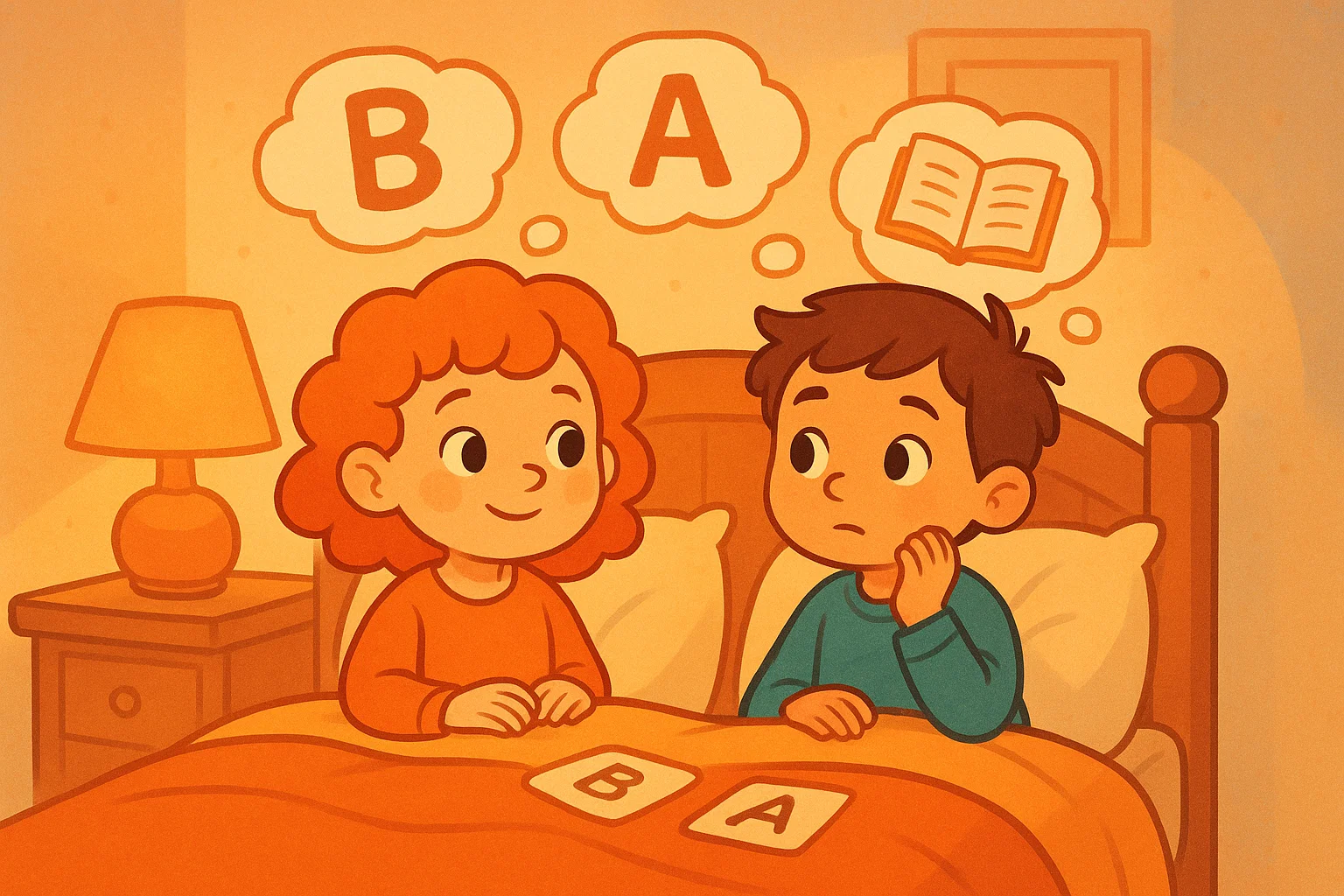
Language-based games build vocabulary and narrative skills while requiring minimal setup. These activities are perfect for winding down because they engage the mind without overstimulating the body.
Alphabet Race Challenge
Pick a category like animals, foods, or places, then take turns naming items in alphabetical order. “A is for alligator, B is for bear, C is for cat.” The first person who can’t think of something loses that round.
According to child development specialists, word games like this one strengthen phonemic awareness—a critical pre-reading skill for young children. You can adjust difficulty by allowing more time for younger kids or requiring multi-word answers for teens.
Word Chain Building Game
Start with any word, then the next player must say a word beginning with the last letter of the previous word. “Cat” leads to “table” leads to “elephant.” The chain continues until someone breaks it.
Add complexity by establishing categories or themes. For instance, all words must relate to nature, or you can only use words with more than five letters. This variation helps older children while keeping the base game accessible for beginners.
Complete the Story: Imagination Play
One person begins a tale with a single sentence, and each player adds one line at a time. The collaborative narrative can take unexpected, hilarious turns as different imaginations contribute.
Try different story-starting prompts: “Once upon a time, a purple elephant discovered a secret door,” or “The day began normally until the cat started speaking French.” Some families record these stories to revisit later, creating a unique collection of bedtime tales.
Say It by the Alphabet
Choose a topic or scenario, then tell a story where each sentence must start with the next letter of the alphabet. “An astronaut landed on the moon. Before long, he noticed something strange. Craters began to glow mysteriously.”
This challenging game develops narrative structure and vocabulary. Younger children might need help with difficult letters like Q, X, and Z, which becomes a fun collaborative moment for the whole family.
Guessing and Deduction Time
Deduction games encourage critical thinking and observation skills. These activities teach kids to ask strategic questions and develop hypothesis-testing abilities.
“What’s My Butt?” Mystery Game
One player sits on a mystery object while others ask yes-or-no questions to guess what it is. Common household items work best—a toy car, a book, a stuffed animal, or a ball.
This silly twist on Twenty Questions never fails to generate giggles, especially with younger kids who find the concept of sitting on things inherently funny. It’s also a great way to develop questioning strategies without feeling like a learning exercise.
Hide the Thimble Seek Game
One person hides a small object while others leave the room, then everyone searches for it. As seekers get closer, the hider gives verbal clues: “You’re getting warmer” or “freezing cold!”
This classic game builds spatial reasoning and listening skills. For added challenge, use time limits or give each player only three clues before they must make a guess about the location.
Wizard in the Dark Roleplay
Turn off the lights and designate one person as the wizard who can cast “freezing spells” by touching others in the dark. Frozen players must stand still until another free player tags them to break the spell.
This game combines hide-and-seek with tag while developing spatial awareness and strategic thinking. Set clear boundaries about where kids can move to keep everyone safe in the darkness.
Mafia Deduction Challenge
This social deduction game works best with older kids and multiple players. One person plays the “mafia” member who secretly eliminates others each round, while the group discusses and votes on who they think the culprit is.
The game develops reasoning skills, persuasive communication, and the ability to read social cues. For younger children, try simpler versions like “Wink Murderer” where the culprit winks at people to eliminate them.
Imagination and Show Activities
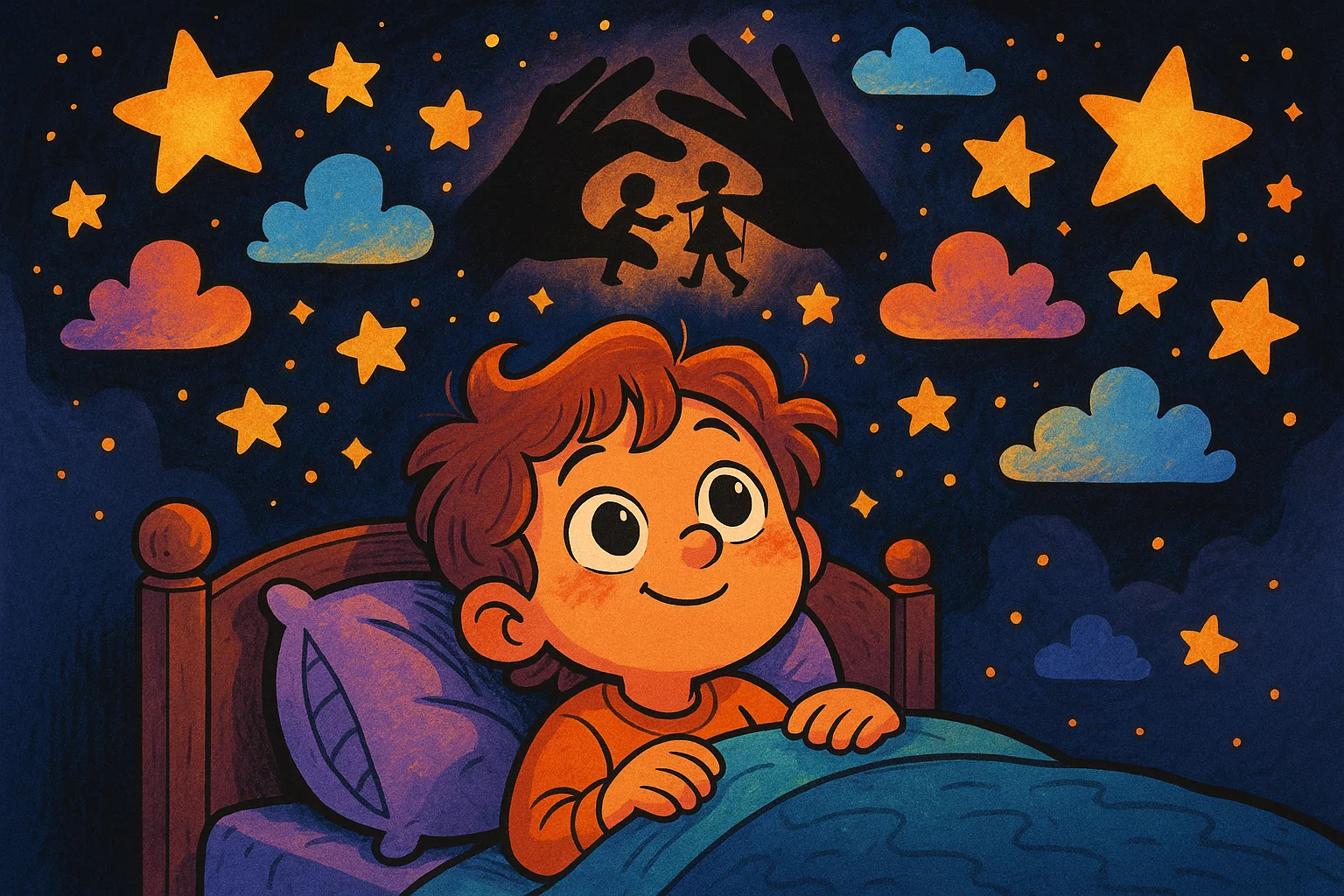
Creative play allows children to explore emotions, develop storytelling abilities, and build confidence through performance and artistic expression.
Watch the Clouds: Fantasizing
Even indoors, you can lie on your backs and find shapes in ceiling textures, shadows, or patterns. Ask your child, “What do you see up there? What story could those shapes tell?”
This quiet activity encourages imagination while providing a natural transition toward sleep. Some families create elaborate backstories for their ceiling characters, returning to them night after night like continuing chapters of a book.
Stargazing Indoor Wonder
Can’t go outside? Create an indoor planetarium using a flashlight and homemade constellation patterns cut from paper. Project them on the ceiling and tell the ancient stories behind star formations.
Puppet Show Storytelling
Use socks, paper bags, or toys as puppets and create impromptu theater. Kids can perform familiar stories or invent entirely new adventures from their imagination.
Build a simple stage using a couch back or doorway draped with a sheet. Encourage your child to develop character voices and personalities. This type of dramatic play strengthens language development and emotional intelligence as children explore different perspectives.
Creative Scavenger Hunt with Clues
Design a hunt with riddles leading to the next location: “I’m cold inside and keep food fresh—look under me to find what’s next.” The final clue can lead to a special treat or a new bedtime story.
According to early childhood educators, scavenger hunts develop problem-solving skills and reading comprehension. They also give kids a sense of accomplishment when they crack each clue. You can adjust difficulty based on age, using pictures for non-readers or complex riddles for older children.
Simple Movement and Floor Play
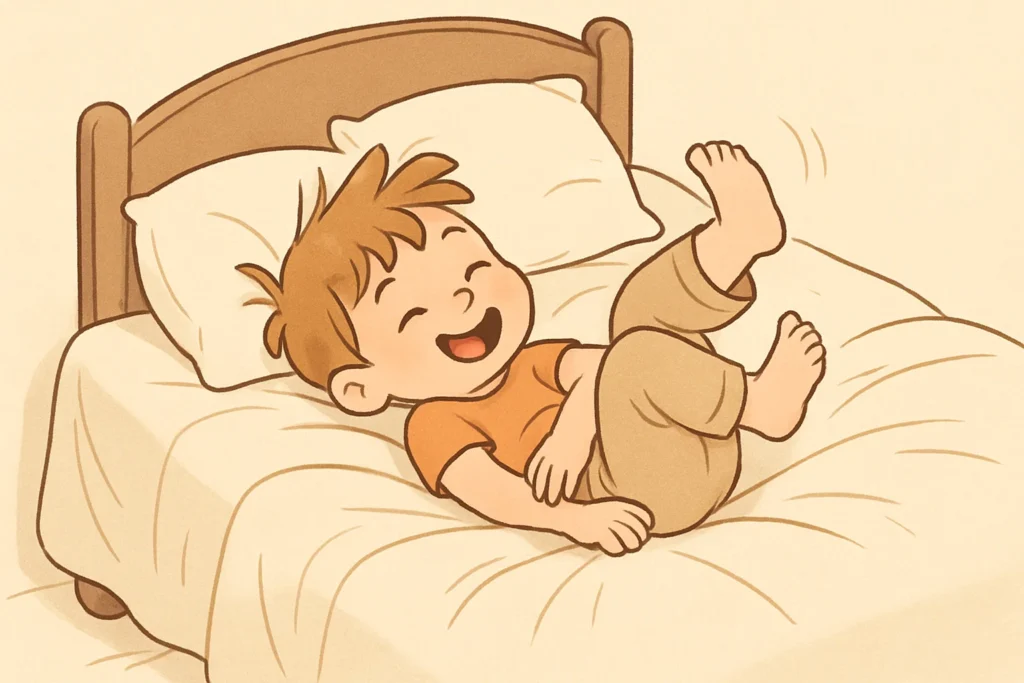
Low-energy physical games provide gentle activity without working kids up before sleep. These are perfect for transitioning from active play to quiet time.
Roll Around Warm-Up Game
Everyone lies on the floor and simply rolls from one end of the room to another. Add variations like log rolls, sommersaults, or inch-worm crawls.
This might sound too simple, but young kids find joy in basic movement, especially when parents participate. Physical therapists note that rolling activities help develop core strength and body awareness in toddlers.
Don’t Wake the Giant: Stillness Game
One person lies still pretending to sleep while others must move around the room silently. If the giant detects noise and points at you, you’re out. The last person moving wins.
This game naturally calms energy levels while developing body control and mindfulness. Some parents report it’s an effective tool for helping hyperactive children practice stillness in a fun, game-based way.
Floor Jail Containment
Players must stay on the floor while one person tries to tag them. Once tagged, you’re in “jail” (a designated spot) until another player crawls over to free you.
Set boundaries about where “jail” is located and establish safe zones if needed. This keeps the game controlled while still allowing kids to move and strategize.
Camouflage Stealth Mode
One person closes their eyes and counts to twenty while others find hiding spots in the room—but here’s the twist: you can’t hide behind anything. You must camouflage yourself by blending into your surroundings using only body position and stillness.
Kids develop spatial reasoning and creative thinking as they figure out how to make themselves less visible. This works particularly well in rooms with interesting furniture arrangements or varied lighting.
Hide-and-Seek Variations
Traditional hide-and-seek gets reimagined with these creative twists that add new challenges and excitement to this timeless favorite.
Sardines: Close Quarters Hide
One person hides while everyone else seeks. When you find the hider, you quietly squeeze into their hiding spot. The last person to find the growing group becomes the next hider.
This reverse hide-and-seek creates funny moments as more people cram into increasingly tight spaces. It also teaches patience and quiet cooperation since premature giggles give away the location.
Return of the Jedi: Hide and Freeze Tag
Combine hiding with freeze tag. The seeker must find and freeze players by tagging them, but hidden players can sneak out to unfreeze teammates. The game ends when everyone is frozen or time runs out.
This adds strategic depth—do you stay hidden or risk being caught to save your friends? Kids develop decision-making skills while burning energy in a controlled way.
Search and Find Dark Mode Game
Play hide-and-seek in the dark using only flashlights to locate each other. This adds an element of excitement and changes familiar spaces into mysterious new environments.
Safety first: clear the play area of obstacles and establish strict boundaries. Many families use glow sticks or LED bracelets to prevent collisions while maintaining the dark atmosphere.
Strategic and Race Games
Games requiring planning and quick thinking keep older kids engaged while teaching valuable skills like teamwork and strategic planning.
Capture the Flag: Bed Edition
Divide into teams and use pillows as flags. Each team defends their base (opposite ends of a bed or room) while trying to steal the opponent’s flag. Tagged players must return to their side before resuming play.
This classic outdoor game adapts surprisingly well indoors with modified rules. Child development experts note that team-based games teach cooperation, rule-following, and graceful winning or losing.
Alien Invasion Scenario
Parents become aliens trying to tag kids, who must travel between safe “planet” zones (furniture pieces) without getting caught. Once tagged, you transform into an alien and help catch others.
Create a backstory together: What are the aliens like? Why did they invade? This narrative element increases engagement, especially for kids who love science fiction themes.
Bees Vs. Wasps Tag
Divide into two teams: bees and wasps. Bees must collect objects (flowers) scattered around the house while wasps try to tag and stop them. Switch roles after each round.
This competitive game teaches resource management and teamwork. You can adjust difficulty by changing the number of items to collect or the time limit for each round.
Laser Grid Obstacle Race
String yarn or ribbon across a hallway at various heights to create a “laser security system.” Players must navigate through without touching any strand. Time each attempt to see who’s fastest.
This develops spatial awareness, body control, and planning skills. Some families create elaborate storylines about what they’re stealing or protecting, turning the activity into immersive imaginative play.
Maze Runner Adventure
Use painter’s tape to create a maze path on the floor that players must follow. Add challenges like hopping sections, crawling areas, or balance beam segments.
Building the maze together can be as fun as running it. This activity combines gross motor skill development with creative design, and the tape peels away easily for cleanup.
Dexterity and Time Challenges
Fine motor activities calm energetic kids while developing coordination and patience—valuable skills that extend beyond game time.
Race Track Finger Fun
Draw a winding race track on paper with a starting line and finish. Players use their fingers to “race” by walking them along the path without going outside the lines.
Add obstacles, shortcuts, and penalties for leaving the track. This simple game improves fine motor control and hand-eye coordination, particularly beneficial for preschool-aged children developing pre-writing skills.
Operation Time: Surgeon Play
Using tweezers or chopsticks, transfer small objects (cotton balls, buttons, or beads) from one container to another without dropping them. Time each player or count how many they can move in sixty seconds.
Occupational therapists sometimes use similar activities to develop pincer grasp and hand strength. Make it thematic by pretending you’re removing “alien artifacts” or “treasure hunting” to increase engagement.
Palaeontologist Digging Game
Freeze small toys in ice blocks or hide them in a container of rice. Kids must carefully excavate their discoveries using spoons or brushes, pretending to be scientists on an archaeological dig.
This sensory activity develops patience and gentle hand movements. Some parents prepare several frozen blocks in advance for especially long play sessions or rainy weekends.
Tattoo Artist Drawing Practice
Let kids “tattoo” designs on your arm using washable markers. They must follow your instructions to draw specific shapes, patterns, or pictures, or they can create original artwork.
This flips traditional drawing activities by making the parent the canvas, which kids find delightfully funny. It also provides a calm, focused activity perfect for the hour before bedtime.
Glow and Light Fun
Light-based games create magical atmospheres that feel special while working with reduced lighting that supports evening wind-down routines.
Light and Darkness Focusing
Use flashlights to create shadow puppets on the wall, telling stories through silhouettes. Experiment with hand positions to create different animals, objects, or characters.
According to child psychologists, shadow play helps children understand cause and effect while stimulating creativity. It’s also an excellent way to make darkness less frightening for kids who struggle with nighttime fears.
Niteball Toss Game
Wrap glow sticks around soft balls or use LED light-up toys for a game of catch in the dark. Create targets using more glow sticks arranged on the floor or taped to walls.
This combines physical activity with visual excitement. The novelty of glowing objects often captivates kids who might otherwise resist active play time before bed.
Glowstick Grab Rush
Scatter glow sticks around a darkened room. When you say “go,” players collect as many as possible in a time limit. Count who gathered the most or sort by color for younger children.
For added challenge, assign point values to different colors or hide them in increasingly difficult spots. This scavenger hunt variation never seems to lose its appeal, even after repeated plays.
Glowing Easter Egg Hunt
Place glow sticks inside plastic eggs and hide them around the house with lights dimmed. Kids search for the glowing treasures, which might contain small treats, jokes, or clues for another activity.
Many families report this becomes a requested game long past Easter season. It combines the thrill of searching with the magical quality of finding glowing surprises in unexpected places.
